G. L. Pease
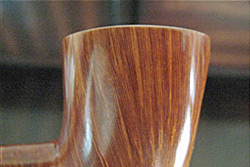 Spring is supposedly riding in on the midnight train, but I’m finding myself wondering if it will arrive on time, or, for that matter, if an impostor with some sort of multiple personality disorder has tossed spring out the window and took over its sleeping car. Where I am, I’ve seen hints of summer, fall, winter, sometimes on the same day, but the only hint of readiness for spring’s arrival are the blooms in the fields. Sunday was hot and clear, today is cool and overcast, and rain is predicted for tomorrow. It brings to mind the old cliché, "If you don’t like the weather, wait five minutes." This makes tobacco and wardrobe selection tricky for those of us whose odd obsessions and predilections are incomprehensibly influenced by meteorological events. (Once again I find myself somewhat envious of those who can enjoy the same blends year-round.) For the moment, the birds are singing, I’ve got a nice pipe filled with Chelsea Morning, and I’m set to tackle this month’s questions. Care to join me?
Spring is supposedly riding in on the midnight train, but I’m finding myself wondering if it will arrive on time, or, for that matter, if an impostor with some sort of multiple personality disorder has tossed spring out the window and took over its sleeping car. Where I am, I’ve seen hints of summer, fall, winter, sometimes on the same day, but the only hint of readiness for spring’s arrival are the blooms in the fields. Sunday was hot and clear, today is cool and overcast, and rain is predicted for tomorrow. It brings to mind the old cliché, "If you don’t like the weather, wait five minutes." This makes tobacco and wardrobe selection tricky for those of us whose odd obsessions and predilections are incomprehensibly influenced by meteorological events. (Once again I find myself somewhat envious of those who can enjoy the same blends year-round.) For the moment, the birds are singing, I’ve got a nice pipe filled with Chelsea Morning, and I’m set to tackle this month’s questions. Care to join me?
Krypton wonders: What causes tongue bite in a blend? Why do some blends (and makers) consistently produce tobacco that "bite", while others consistently make blends that do not? For example, I find that the different Mac Baren blends I’ve tried tend to always bite me, while Cornell & Diehl and GL Pease blends consistently don’t. Is it due to a chemical additive? Or the type of leaf used? I know that one’s manner of packing and smoking can affect the heat, but if I, the smoker, were the control factor, and the blend was the variable, the difference in the blends still comes out. Thank you!
A: There’s no simple answer to this, as what bites one smoker ferociously can be as gentle as a spring lamb to another. The reaction between body chemistry and that of the tobacco plays the most obvious role, far more so than smoking style. Often, when someone complains that a tobacco bites them, they’ll be counseled by well-meaning folk to "slow down, puff more gently, pack the pipe differently," and similar platitudes, yet all too frequently, this advice won’t change much of anything. There are very popular tobaccos that many people find mild, gentle on the tongue, smooth, all-day smokes that, within a few puffs, leave my mouth feeling like a full-scale assault had been waged on my tongue. The converse is also often true; a blend that I find a friendly companion is the arch enemy of another smoker. Paradoxically, there are those who will love or hate both blends equally.
While the predisposition of a tobacco to cause a smoker pleasure or pain is more likely in the tobacco’s metaphorical DNA, and that of the smoker, smoking style does have an influence. A harsh smoke is exacerbated by harsh puffing for a variety of reasons, the most obvious being the increased heat involved. More of the tobaccos volatiles will be burned and delivered in a hotter stream to the smoker’s tongue, where the increased temperature will cause more rapid reaction. "Bite," as we know it, is a chemical effect, not a physical one. Even puffing furiously, you’re not likely to get smoke onto your tender tongue that’s hotter than a tepid cup of tea.
The way tobacco is treated has much to do with the nature of its smoke. How it’s fermented, and even where and how long it’s aged can make a difference. The same leaf processed by two different blenders can yield very different results. The ingredients in a blend, too, matter. Some tobaccos are notorious for harshness (un-sugared burleys, for instance, tear up my throat before a half-bowl is finished), others for polishing off the rough edges (adding a little Perique to a VA can turn 80-grit sandpaper into black velvet). And, none of this has anything to do with chemical additives, which can complicate things still further.
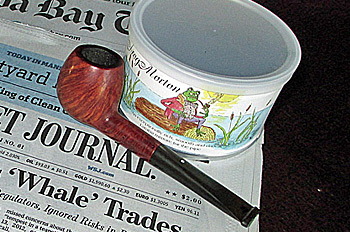 The pipe can have a surprising effect on the roughness or smoothness of a tobacco. I’ve got pipes that will deliver a smooth, sweet smoke from pencil shavings, and have had a few others that rendered the smoke from the finest aged mixtures as inviting as a mouthful of broken glass. Interestingly, those "bad" pipes, traded away, often become favorite smokers of their new owners, further indication that we’re all a little different in our reaction to these things.
The pipe can have a surprising effect on the roughness or smoothness of a tobacco. I’ve got pipes that will deliver a smooth, sweet smoke from pencil shavings, and have had a few others that rendered the smoke from the finest aged mixtures as inviting as a mouthful of broken glass. Interestingly, those "bad" pipes, traded away, often become favorite smokers of their new owners, further indication that we’re all a little different in our reaction to these things.
Sometimes, too, environmental factors, or what you’ve eaten that day, or what you drink when you’re smoking can influence the effect dramatically. (I particularly like a nice cup of tea with a good smoke.) Unfortunately, there aren’t really any shortcuts, and in the end, you’ll have to pick and choose what works best for you. If you rely on reviews for guidance, find people with similar tastes and follow their lead, keeping in mind that it won’t always work. (Some people seem to be able to smoke anything with impunity. I envy them.)
Zamboni queries: I often read about airways being drilled "perfectly centered at the bottom of the bowl," and that this is a requirement if the pipe is going to be a good smoker. How important is this, and how far off is "good enough?" How do you evaluate this?
A: Are you the same Zamboni who makes those spiffy machines to keep the ice-rinks smooth? And, you’re asking me about this? I’d better keep my wits on.
Personally, I think more is made of this, and the infamous "pipe cleaner test" than is reasonable. Ideally, yes, the draught hole should probably be drilled centered, and at or just above the bottom of the bowl. If there’s a slight overhang there, maybe 1mm or so, it’s my experience that it really doesn’t matter. We don’t want the airway half way up the bowl, but a little loft here won’t make the pipe a bad smoker. In fact, there may be some advantage to the draught being just a tiny bit above the bowl floor. As the pipe is broken in and a nice cake is formed, the bottom of the bowl will rise up to meet the draught hole. Of course, it the draught is too high, more than a couple millimeters, building that bottom cake will be all but impossible.
But, what’s the big deal about it being centered? This is less important. If the airway drifts to the right or the left a little, the hole in the bowl will be rendered oval across its horizontal axis. Unless that drift is significant, it doesn’t matter much to the way the pipe smokes, and if the drift is dramatic, it might be an indication that there are other things wrong with the pipe’s construction. One thing that precise drilling does indicate is that a pipe-maker took the time and has the skill to do things right. Attention to detail is one of the things that makes a great pipe what it is so it’s generally a good idea to at least pay some mind to the little hole inside the big hole.
Evaluating the drilling is pretty easy if you have a penlight handy. Pull the stem off the pipe, and shine the light down the shank whilst gazing into the bowl. What you’ll see is very revealing. If there’s a bright spot opposite the draught hole, and a dark shadow underneath, it was drilled high. If there’s a continuous broad splash of light along the bottom of the bowl, it’s probably too low. The ideal drilling will show the light just kissing the bottom of the bowl as it finds its way to the other side. If the spot is skewed to the right or left when it hits the opposite wall, it’s off-center. It only takes a few seconds, and can provide more information than a simple eyeball examination. And, yes, I think it’s mostly un-necessary.
Carry your penlight in a plastic pocket protector in your shirt pocket, and learn to utter things like, "Hmm, interesting" during the examination. This, and a slide rule on your belt will make you one of the cool kids. Even if you’re not that Zamboni.
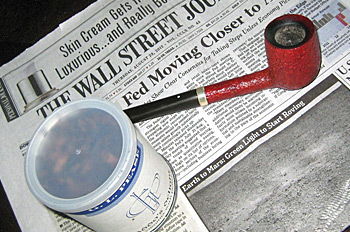 From Troy: I was hoping you may be able to lift the fog on the origins of Esoterica Tobacciana? The blends have achieved mythic status yet their exact history seems to be elusive. I have read that the blends were made by J.F. Germain at the request of Stephen Richman, who also happened to be the proprietor of Drucquer’s Piedmont location. Was it actually Mr. Stephen Richman who developed the recipes for the Esoterica line?
From Troy: I was hoping you may be able to lift the fog on the origins of Esoterica Tobacciana? The blends have achieved mythic status yet their exact history seems to be elusive. I have read that the blends were made by J.F. Germain at the request of Stephen Richman, who also happened to be the proprietor of Drucquer’s Piedmont location. Was it actually Mr. Stephen Richman who developed the recipes for the Esoterica line?
A: The Esoterica Tobacciana brand was, in fact, Steve’s brainchild. He started the company in 1988, getting a boatload of samples from Germain, from which Steve, I, and a couple others, evaluated blends for inclusion in the Esoterica range. Somewhere, I still have pages and pages of notes I took during the tasting process. It was quite eye-opening. Steve later sold the brand to Mike Butera, who continues to import and distribute the range. As a point of clarification, Steve was not the proprietor of the Drucuqer store, but managed it. After the owner closed the shop, Steve moved to the Berkeley store for a while before opening his own shop, The Piedmont Tobacconist, around the corner from the old Drucquer location, and still in operation. If you’re ever in Oakland, stop by to check it out.
Terry offers an interesting one: Greg, I keep hearing from hobbyists that pipe smoking is on the rise over the last few years. While I don’t doubt this, I wonder what metrics do you look at to tell you where the hobby is at now? Without disclosing specifics of your business can you give us a sense of the growth of the pipe tobacco segment and the artisanal tobacco niche in particular? Has it really been on the rise, and how should we best gauge this trend? Thanks.
A: The government keeps tabs on tobacco sales using Federal Excise Tax for tracking, and those figures used to be quite useful. Used to be.
In January 2009, monthly pipe tobacco sales were reported at approximately 240,000 pounds. By September of 2011, this figure surged remarkably (and unbelievably) to over 3-million pounds. At first glance, that would seem to represent a 12-fold increase in pipe smoking, but, sadly, this was not the case. (Wait for it…) In that same period, sales of RYO tobacco declined from about 2-million pounds monthly to just over 300,000 pounds. In response to wildly increased SCHIP-based Federal Excise Taxes on RYO tobacco, some manufacturers re-labeled their products as "Pipe Tobacco," relieving them, at least temporarily, from extortionate taxation, whilst simultaneously making a once useful metric completely meaningless. How much of that tobacco ended up being smoked in pipes? Not very much, I’d predict.
It’s estimated, by those who do these things professionally, that there were about 2.5 million pipe smokers in the US in 2012, up from 1.5-million just a few years ago. That’s significant growth, and there are indications that it is continuing, but we don’t want to call too much attention to that fact, as most of the growth would appear to be amongst college-aged adults who are turning to the pipe as a way to relieve some of the stresses of their daily lives, and we don’t want the antis whining more about how the devil’s weed is luring our youth towards their ultimate demise.
We’re also getting some spillover from cigar smokers turning to the pipe to relieve some stress on their wallets as cigar prices continue to rise to record levels. As far as the boutique market growth versus that of the mass market goes, that’s a little tougher to figure. It’s likely that the market segments are growing fairly equally, but in the boutique side of things, there are more micro-blenders competing for their very small piece of the pie, so it’s not always easy to track. I know I’d be a lot better off if my brand’s sales had increased by that same 67%!
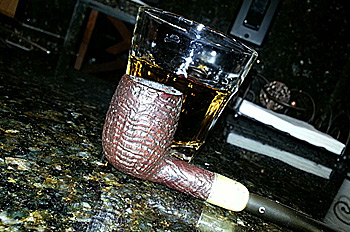 Bob B. poses this: Greg, Your tin labels should be models for every other blender out there. You don’t just stop with a name; you give us the constituent ingredients, which I greatly appreciate — especially since I’m apparently unusually sensitive (in a bad way) to Perique and nicotine-heavy blends. But I’m curious why other blenders don’t follow suit. Why, in this day of rampant food allergies and truth (or something close to it) in labeling, do we still see pipe tobacco tins that tell us absolutely nothing about the blends inside? Some don’t go beyond a name that conveys no information at all — not even whether the blend is aromatic or not. A random dip into my to-be-smoked drawer gave me three blends like this: London Blend #1000, Jocks Mixture, and Dunhill’s The Aperitif. Others, particularly yours and McClelland’s, paint a very good picture of what to expect when you open a tin. Your thoughts?
Bob B. poses this: Greg, Your tin labels should be models for every other blender out there. You don’t just stop with a name; you give us the constituent ingredients, which I greatly appreciate — especially since I’m apparently unusually sensitive (in a bad way) to Perique and nicotine-heavy blends. But I’m curious why other blenders don’t follow suit. Why, in this day of rampant food allergies and truth (or something close to it) in labeling, do we still see pipe tobacco tins that tell us absolutely nothing about the blends inside? Some don’t go beyond a name that conveys no information at all — not even whether the blend is aromatic or not. A random dip into my to-be-smoked drawer gave me three blends like this: London Blend #1000, Jocks Mixture, and Dunhill’s The Aperitif. Others, particularly yours and McClelland’s, paint a very good picture of what to expect when you open a tin. Your thoughts?
A: Historically, blenders have been fairly proprietary with their blends’ constituents, even to the point of sometimes lumping Latakia into the more nebulous category of "oriental." It’s hard to find a sensible rationale behind this. Surely, it wasn’t to protect recipe secrets, as a blender worth his rice would have a pretty good idea of what’s in a mixture by examining it.
Likely, the consumer of the day didn’t care as much as we do about these things. And, why should he have? He could walk into an one his local tobacconists’ shops, sniff his way from jar to jar, or talk with a knowledgeable clerk until something caught his fancy, and go from there. Times have changed. When I started my company, I recognized that there were a lot more pipe smokers without local tobacconists than those with, and so felt it to be good service to the consumer to provide more information both on the tins and on the website. Why others don’t do this, I can’t say, but I thank you for your kind words regarding my doing so.
That’s it for this edition. Hope you enjoyed it as much as I did, and keep the great questions coming.
-glp
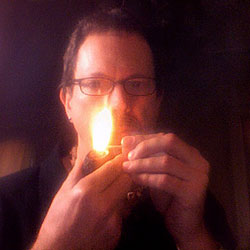 Since 1999, Gregory L. Pease has been the principal alchemist behind the blends of G.L. Pease Artisanal Tobaccos. He’s been a passionate pipeman since his university days, having cut his pipe teeth at the now extinct Drucquer & Sons Tobacconist in Berkeley, California. Greg is also author of The Briar & Leaf Chronicles, a photographer, recovering computer scientist, sometimes chef, and creator of The Epicure’s Asylum. See our interview with G. L. Pease here. |


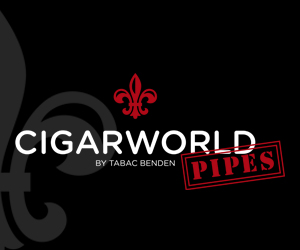












Your stuff is always worth reading, Greg.
Cool beans. Thanks for the verification & clarification regarding Esoterica. I should have asked a better question, like did Stephen Richman have any particular inspiration from famous tobacco houses of yore? And if so, which ones? I haven’t smoked the entire range and I’m yet a neophyte pipester, but Esoterica seems to embody the spirit of the old-timey British softly scented tobaccos, of which it seems there may have been many and which I have no real-life experience with unfortunately. I suppose in large part the British character of course comes thru because of Germain, yet Esoterica seems distinct from any other, this speaks volumes for the brilliance of Richman and his true love of tobacco, simply amazing.
Spot on again Greg! You pointed out several interesting things with one stone. I’m in total agreement about the draft hole on a pipe, and will use your pen light idea from now on. I have OCD and need that hole in it’s proper place even if it doesn’t affect the way it smokes very much! If it’s out of kilter, I go nuts! In fact, I call my affliction CDO, just because I need the letters to be alphabetical!
Very excellent article. My only concern with the draft hole is whether or not the pipe whistles. It has been rare indeed that the location of the draft hole has made any difference in the pipe itself. I have a great pipe with the most insane drilling ever, and most would probably have consigned it to the trash. But it smoked well, without gurgle or restriction.
Great article.
I can appreciate the main cause of tongue bite is chemical but a significant variable does seem to be nicotine strength. This was the orthodox view in those who wrote about tobacco in the UK thirty or more years ago. Now I know the co-relation is not perfect
– one can think of tobaccos stronger than one normally smoked that also bit – but there are almost no tobaccos below a certain strength that I can manage except on the best days and with the most helpful pipes. To give examples from Greg’s range which I agree has an enviable record on biting, offending less than any other I have come across including Dunhill. Robusto never bites (this is no small compliment as I am bite prone) while a recently opened tin of the very similar but less strong Key Largo is a bit bitey (I would guess after 7-10 days air this will decrease and may well fade altogether). As a curiosity I think his Laurel Heights is the least strong tobacco I can comfortably and enjoyably smoke for more than one bowl. The reason for nicotine strength playing a part could be that lower strength encourages different puffing or it could be that nicotine strength is part of the chemical balance that causes bite or some other reason. In the latter case it is as much an indicator as a cause.
I am always a bit surprised that Germain’s produced tobacco is so revered in the USA but such has been my disappointment with several of their UK tobaccos that I have never quite mustered the resolve to pay the cost of getting them sent over here. However, its a pity that some arrangement can not be reached to supply the Esoterica range in the UK as choice over here is much less than in the USA and it does seem strange to have a UK made tobacco unavailable.
Thank You for your insight, another enjoyable and refreshing article.
Re: Draft hole. It’s nice to see a more measured approach to the question of draft holes and how they will effect the end smoking experience. One pipe, a “second”, I bought online has a slightly off centre hole where it enters the bowl. Armed with the “received wisdom” of reading up on the subject, I was tempted to return it. But it had been cheap and the cost of returning it seemed excessive in comparison, so I tried it out. It smokes really rather well and it’s been in my regular rotation ever since. Has the draw hole been dead straight, I would never have been able to afford the pipe in the first place!
I have always been of the opinion that the tobacco doesn’t know where the bowl and stem meet. Thanks for another informative and well written article.
As always an entertaining and informative read.